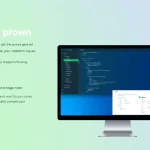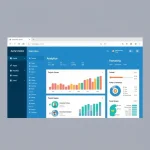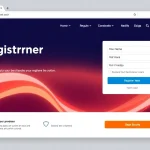Understanding Market Research Data Collection
What is Market Research Data Collection?
Market research data collection involves systematically gathering information to understand the preferences, behaviors, and needs of consumers. This data is pivotal for businesses looking to make informed decisions regarding their products, services, and marketing strategies. By combining both qualitative and quantitative methodologies, organizations can gain profound insights into their target audience and market dynamics. In essence, market research data collection informs businesses on how to align their offerings with market demands, thus facilitating more effective decision-making processes. For a deeper understanding of how to effectively gather this data, you may refer to resources focusing on market research data collection.
Importance of Data Collection in Business Strategies
In today’s highly competitive landscape, the importance of robust data collection cannot be overstated. Effective data collection provides critical insights that inform marketing strategies, product development, pricing, and customer engagement efforts. Companies that leverage high-quality data are better positioned to anticipate market trends, understand consumer behavior, and identify opportunities for growth.
Additionally, data collection helps businesses mitigate risks. By analyzing consumer feedback and market conditions, organizations can pivot in response to changing demands, thus maintaining relevance and competitiveness. Longitudinal studies often show that companies that consistently apply data-backed strategies outperform those that do not, achieving higher sales growth and customer satisfaction rates.
Types of Data Collected for Market Research
Market research revolves around two primary categories of data: qualitative and quantitative. Understanding the nuances of each is crucial for effective data interpretation and application.
- Qualitative Data: This category focuses on understanding the underlying reasons, opinions, and motivations of consumers. Methods such as focus groups, interviews, and open-ended survey questions are common tools for collecting qualitative data. It provides depth and context that numerical data alone cannot convey.
- Quantitative Data: On the other hand, quantitative data employs statistical methods to gain insights into the market. Surveys with fixed responses, demographic information, sales data, and metrics from digital channels represent forms of quantitative data. This type of data is valuable for identifying trends and patterns that inform strategic direction.
Additionally, secondary data (existing data collected for purposes other than the current research) and primary data (data collected specifically for the research at hand) play significant roles in comprehensive market research.
Methods of Collecting Market Research Data
Surveys: Crafting the Right Questions
Surveys are among the most widely utilized methods for market research data collection. They allow researchers to gather a large volume of data efficiently. Crafting the right questions is fundamental to the success of any survey. Questions should be clear, unbiased, and tailored to extract meaningful insights from respondents.
Effective survey design incorporates a mix of closed-ended questions (which provide quantitative data) and open-ended questions (which offer qualitative insights). The choice of distribution method—whether online, by mail, or in person—also impacts response rates and data quality.
It’s essential to pre-test surveys with a small group to identify any issues and ensure that questions are understood as intended, leading to more reliable results in the final study.
Focus Groups: Engaging Target Audiences
Focus groups offer an engaging and interactive way to collect qualitative data. They typically involve a small number of participants from the target demographic discussing their perceptions, opinions, and feelings about a product or concept. A skilled facilitator guides these discussions to ensure that they remain productive and focused.
The strength of focus groups lies in their ability to generate in-depth discussions that reveal consumer attitudes and motivations that might not surface in quantitative studies. These sessions can be particularly enlightening for exploratory research, providing foundational insights to build upon in larger-scale studies.
Interviews: Gathering In-Depth Insights
Interviews are another valuable method for market research, allowing for one-on-one interaction that can yield detailed insights. By using a semi-structured format, researchers can maintain a balance between guided questioning and open dialogue, providing flexibility to explore topics in greater depth as they emerge during the conversation.
Benefits of interviews include the ability to probe deeper into individual responses, clarify ambiguous answers, and gather rich narratives. They are particularly effective for understanding complex decisions or behaviors, making them a crucial component of comprehensive market research strategies.
Best Practices for Market Research Data Collection
Ensuring Data Quality and Reliability
Data quality and reliability are fundamental to deriving actionable insights from research. Implementing best practices such as clear definitions of metrics, using validated data collection instruments, and training data collectors can greatly enhance the reliability of findings. Additionally, employing appropriate sampling techniques ensures that data accurately represents the target population.
Regular audits of data collection processes help identify areas for improvement, while the establishment of standardized procedures minimizes variability and maintains consistency across research efforts. Finally, engagement with stakeholders throughout the data collection process ensures that the goals of the research align with organizational needs.
Ethical Considerations in Data Collection
Ethics play a crucial role in market research data collection. Researchers must obtain informed consent from participants, ensuring they understand how their data will be used. Protecting participant anonymity and confidentiality is also vital, particularly in sensitive research contexts.
Ethical frameworks should guide the research design, execution, and reporting phases. Organizations must also adhere to local and international regulations regarding data protection and privacy, such as GDPR or CCPA, to maintain the trust of consumers and avoid legal repercussions.
Utilizing Technology for Efficient Data Gathering
Technology greatly enhances the efficiency and accuracy of market research data collection. Online survey platforms, data analytics tools, and market monitoring software can streamline the data collection process and provide advanced analytical capabilities.
Automation tools facilitate data entry and analysis, reducing human error and saving time. Furthermore, leveraging online panels for surveys increases access to diverse participant pools, improving the representativeness of research findings. Utilizing real-time data collection tools allows businesses to adapt quickly to findings, enhancing responsiveness to market trends.
Analyzing and Interpreting Market Research Data
Data Analysis Techniques for Actionable Insights
Once data is collected, the next step is analysis—transforming raw data into actionable insights. Various statistical methods can be used depending on the nature of the data and research questions. Descriptive statistics provide a summary of findings, while inferential statistics help researchers draw conclusions about larger populations based on sample data.
Techniques such as correlation analysis, regression analysis, and thematic analysis (for qualitative data) enable researchers to identify relationships, trends, and patterns, guiding strategic decision-making processes. Data triangulation—cross-verifying findings from different data sources—further enhances the credibility of conclusions.
Visualizing Data for Better Understanding
Effective data visualization is key to conveying complex information in an easily digestible format. Visual tools such as graphs, charts, and infographics can present data trends and patterns at a glance, making them invaluable for presentations and reports.
Choosing the right type of visualization is critical; effective representations not only engage stakeholders but also facilitate greater understanding and interpretation of the data. Tools like Tableau, Google Data Studio, and Excel can be employed to create dynamic visual displays that enhance stakeholder engagement and decision-making.
Transforming Findings into Strategic Actions
The ultimate goal of market research data collection and analysis is to translate findings into strategic actions. This process involves synthesizing insights into clear, actionable recommendations that align with business objectives.
Effective communication of findings to key stakeholders is crucial for fostering support and facilitating implementation. It’s beneficial to contextualize findings within broader market trends, illustrating their relevance to organizational goals. Additionally, developing a follow-up plan to monitor the impact of strategic actions based on research findings ensures accountability and ongoing improvement.
Future Trends in Market Research Data Collection
The Role of AI and Automation
The integration of artificial intelligence (AI) and automation technologies is reshaping the landscape of market research data collection. AI algorithms enhance data analysis by uncovering patterns that may be overlooked through traditional means, enabling faster and more accurate insights.
Automation streamlines data collection processes, from survey distribution to data analysis, allowing researchers to focus on interpreting findings rather than manual tasks. The increasing sophistication of AI enables predictive analytics that help organizations anticipate market changes and consumer behavior.
Emerging Trends in Consumer Behavior Tracking
Emerging technologies like location-based services, social media monitoring, and mobile tracking tools are revolutionizing the way businesses collect consumer behavior data. These tools provide real-time insights into consumer preferences and behaviors, enabling organizations to adapt quickly to trends and preferences as they develop.
Moreover, the movement towards omnichannel data collection—integrating insights across multiple digital and physical platforms—offers a comprehensive view of consumer interactions, enabling more informed decision-making.
Adapting to Changes in Data Privacy Regulations
As data privacy concerns come to the forefront of consumer consciousness, market researchers must adapt to stringent regulations regarding data collection and usage. Staying abreast of legislative changes like GDPR and CCPA is critical for safeguarding customer information and maintaining trust.
Adopting transparent data collection practices and ensuring compliance with regulations are paramount for any organization embarking on market research. This proactive approach not only protects organizations but also fosters consumer trust, essential for long-term business success.








